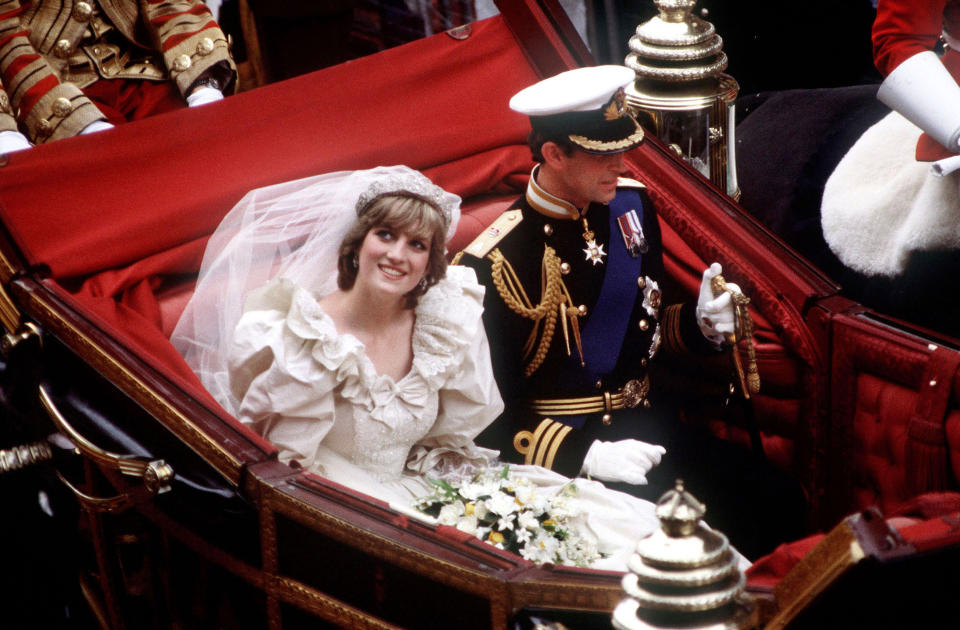Fact check: What 'The Crown' got right, and what it embellished, in its portrayal of Diana
- Oops!Something went wrong.Please try again later.
- Oops!Something went wrong.Please try again later.
Netflix's royal family drama “The Crown,” now in its fourth season, turns viewers into amateur historians. The acclaimed series takes ample liberties with the historical record — but NBC News is here to help you separate fact from fiction. Be warned, though: spoilers ahead.
The fourth season of “The Crown” is focused largely on the troubled relationship between Prince Charles (Josh O’Connor) and Lady Diana (Emma Corrin), who married in 1981 and formally divorced in 1996 — just a year before her death in a car crash in Paris. “The Crown” depicts the pair’s explosive arguments and extramarital affairs, painting a decidedly grim portrait of a union that many members of the public initially perceived as a fairy-tale romance. Diana’s private struggles, in particular, are depicted in agonizing detail.
But how accurate is the show’s take on the world-famous couple?
‘Three of us in this marriage’
“The Crown" strongly hints that Prince Charles was romantically involved with Camilla Parker Bowles (Emerald Fennell), his ex-girlfriend (and future second wife) — even in the first five years of his tumultuous and doomed marriage to Diana.
But in an interview with NBC News, a historian who has written several biographies of members of the British royal family disputed that suggestion.
“He gave Camilla up before he married Diana,” said Sally Bedell Smith, author of “Prince Charles: The Passions and Paradoxes of an Improbable Life” as well as a biography of Queen Elizabeth II.
Smith pointed to a 1994 television interview Charles gave to British journalist Jonathan Dimbleby in which the Prince of Wales admitted to infidelity only after his first marriage had “irretrievably broken down, us both having tried.” (The show suggests the marriage slowly curdled into a toxic détente, with Charles becoming increasingly venomous.)
Charles purportedly resumed his relationship with Parker Bowles in 1986, five years into his marriage to Diana, according to an authorized, exhaustive biography written by Dimbleby.
However, no matter the exact timing of the affair, it appears Charles continued to rely on Parker Bowles as a close confidant even in the early days of his union with Diana, causing tension in his marriage. “There were three of us in this marriage, so it was a bit crowded,” Diana famously told the BBC in 1995.

“The Crown” also suggests that the brooding, ruminative Charles and the shy but charismatic Diana — separated by a 12-year age difference — were poorly suited from the start, a mismatch exacerbated by what the show presents as his cruel indifference and the intrusions of the tabloid press.
What’s more, the season premiere implies that Charles proposed to Diana partly on account of pressure from members of his family — especially his great-uncle, Louis Mountbatten (Charles Dance), who was later assassinated by members of the Irish Republican Army in 1979.
Clive Irving, author of “The Last Queen: Elizabeth II's Seventy Year Battle to Save the House of Windsor,” said there was some truth to the show’s take on the reasons for the marriage, although the context for the nuptials was likely overstated for dramatic effect.
Smith, for her part, agreed with the show’s assessment that Charles and Diana were not well-matched: “They were a misalliance. They were only together a dozen times before they were engaged.”
Diana’s struggles
“The Crown” explores Diana’s difficult personal trials during the years of her marriage to Charles, alluding to mental health challenges and depicting her experience with bulimia. The show’s portrayal of Diana’s private pain appears to be based on various bestselling books and well-known interviews.
Diana’s personal ordeals were detailed in the 1992 bestseller “Diana: Her True Story,” by Andrew Morton — a journalist who later disclosed that Diana had been his principal source of information about her unhappy marriage, according to a New York Times article published a month after her death.
In her 1995 interview with the BBC, Diana spoke candidly about experiencing postpartum depression after the birth of her sons, William and Harry, and said she had bulimia “for a number of years.”

“I was unwell with postnatal depression, which no one ever discusses, postnatal depression, you have to read about it afterwards, and that in itself was a bit of a difficult time,” Diana said, according to an interview transcript. “You'd wake up in the morning feeling you didn't want to get out of bed, you felt misunderstood, and just very, very low in yourself.”
The show’s portrait of Diana is not entirely bleak, however. The fourth season shows how Diana became "The People's Princess," an inspiration to women around the world with her grace and refined style — as well as a gifted ambassador for the monarchy during foreign trips.
In one of the most moving scenes of the season, Diana warmly embraces a little boy with AIDS while touring a hospital in Harlem — a real event that happened during a three-day visit to New York City in 1989, when she was 27.

